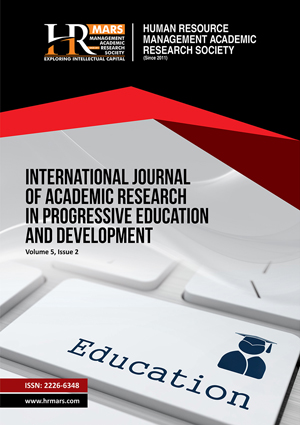
ISSN: 2226-6348
Open access
An examination of the Kenya Certificate of Secondary Education (KCSE) music results reveals that the performance index in aural (Paper 511/2) has been consistently low over the years. Yet the importance of this section of the examination, the “hearing with the eyes and seeing with the ear” cannot be downplayed. This study set out to test the hypothesis that there is no significant difference in performance in aural tests between students trained using the voice and those trained using the recorder. Subjects were students at a National Girl’s School within the outskirts of Nairobi where the researcher was the music teacher. The research adopted a quasi-experimental design, using two groups of 9 and 12 students, dubbed the experimental group 1 and experimental group 2 respectively. Experimental group 1 got its intervention through use of the recorder, which the students learned to play from day one and continued for two years, while experimental group 2 used the voice in all practical lessons for the same period of time. Scores on the pre-test and post-test were compared at the end of the study period. Though the researcher could not rule out the John Henry effect, the results revealed no significant difference between the groups in the performance of the aural test. However, the experimental group 1 was better at sight reading at the end of the study. It was recommended that music teachers use a mixture of both voice and instruments in the development of aural acuity at the formative stages.
Beckman, A. A. (2011) Aural skills pedagogy: from academic research to the everyday classroom. Honors Thesis, Texas State University.
Corey, J. (2010) Audio production and critical listening: Technical ear training. Oxford, Elselver, inc
Gordon, E. (2007) Learning Sequences in Music: A Contemporary Learning Theory Chicago: GIA Publications, Inc,
Hansen, B. (2005). Strategies for teaching aural recognition. Conference proceedings, College Music society, Pacific Northwest Chapter Conference Feb 12, 2005.
Hedges, D. P. (1999). Taking Notes: The History, Practice, and Innovation of Musical Dictation in English and American Aural Skills Pedagogy. Doctoral dissertation, Indiana University.
http://en.wikipedia.org/wiki/Ear_training
http://www.abrsm.org/regions/fileadmin/user_upload/syllabuses/auralComplete11.pdf)
Ilomäki, L. (2011) In search of musicianship: A Practitioner-Research Project on Pianists’ Aural-Skills Education. Helsinki, Unigrafia OY.
Karpinski, G. S. (2000). Aural Skills Acquisition. The Development of Listening, Reading, and Performing Skills in College-Level Musicians. Oxford UK: Oxford University Press.
Makobi, T. (1985) Factors affecting music education in primary schools. Unpublished M.ed. thesis, Kenyatta university.
Mbeche, G. C. (2010). Factors affecting student performance of aural skills at KCSE in Nairobi Secondary Schools. Unpublished PhD. Thesis, Kenyatta University.
Rogers M. (2013). Aural dictation affects high achievement in sight singing, performance and composition skills. Australian Journal of Music Education: 1, 34-52
In-Text Citation: (Kihoro, 2016)
To Cite this Article: Kihoro, M. F. (2016). Differentiated Approaches to Aural Acuity Development: A Case of a Secondary School in Kiambu County, Kenya. International Journal of Academic Research in Progressive Education and Development, 5(3), 12–19.
Copyright: © 2016 The Author(s)
Published by Human Resource Management Academic Research Society (www.hrmars.com)
This article is published under the Creative Commons Attribution (CC BY 4.0) license. Anyone may reproduce, distribute, translate and create derivative works of this article (for both commercial and non-commercial purposes), subject to full attribution to the original publication and authors. The full terms of this license may be seen at: http://creativecommons.org/licences/by/4.0/legalcode